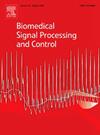基于自然语言处理和图中心性的精确应用行为分析干预自闭症谱系障碍
IF 4.9
2区 医学
Q1 ENGINEERING, BIOMEDICAL
引用次数: 0
摘要
自闭症谱系障碍(ASD)患病率的上升和个性化治疗的迫切需求凸显了数据科学在提高临床医生能力和治疗质量方面的作用。自然语言处理(NLP)的应用通过分析和发现从电子病历(EHRs)中提取的治疗处方之间的相似性,创造了新的范例。社会网络分析(SNA)和中心性计算方法为识别行为模式和心理健康症状、预测治疗进展和个性化轨迹开辟了新的途径。本文采用NLP方法对29例患者的纵向应用行为分析(ABA)治疗数据进行预处理,并计算各种中心性评分,建立了一种新的SNA图模型。我们在六个月的干预期间的不同时间点进行社区检测,并根据处方和社会人口统计学相似性建立边缘权重找到患者的相似性。我们开发了一个治疗推荐模型,并将其推荐和有效性措施的结果与基本事实相匹配。我们的贡献探索了确定中心性措施对患者水平技能获得和治疗推荐的节点影响的新方法。本文章由计算机程序翻译,如有差异,请以英文原文为准。
Precision applied behavior analysis intervention for autism spectrum disorder using natural language processing and graph centrality
The increased prevalence of Autism Spectrum Disorder (ASD) and the urgent need for personalized treatment have highlighted the role of data science in enhancing clinicians’ capacity and treatment quality. Application of Natural Language Processing (NLP) has created new paradigms by analyzing and finding similarities between the treatment prescriptions extracted from Electronic Health Records (EHRs). Social Network Analysis (SNA) and centrality computation methods have opened new avenues to identify behavior patterns and mental health symptoms, forecasting therapy progression and personalization trajectories. In this paper, we develop a novel SNA graph model by preprocessing longitudinal Applied Behavior Analysis (ABA) treatment data of 29 patients using NLP methods and computing various centrality scores. We perform community detection at various temporal points during the six-month intervention duration and find patient similarity based on prescription and socio-demographic similarity-building edge weights. We develop a treatment recommendation model and match its outcome on recommendation and effectiveness measures with the ground truth. Our contribution explores novel approaches in determining the node influence of centrality measures on patient-level skill acquisition and treatment recommendation.
求助全文
通过发布文献求助,成功后即可免费获取论文全文。
去求助
来源期刊

Biomedical Signal Processing and Control
工程技术-工程:生物医学
CiteScore
9.80
自引率
13.70%
发文量
822
审稿时长
4 months
期刊介绍:
Biomedical Signal Processing and Control aims to provide a cross-disciplinary international forum for the interchange of information on research in the measurement and analysis of signals and images in clinical medicine and the biological sciences. Emphasis is placed on contributions dealing with the practical, applications-led research on the use of methods and devices in clinical diagnosis, patient monitoring and management.
Biomedical Signal Processing and Control reflects the main areas in which these methods are being used and developed at the interface of both engineering and clinical science. The scope of the journal is defined to include relevant review papers, technical notes, short communications and letters. Tutorial papers and special issues will also be published.
 求助内容:
求助内容: 应助结果提醒方式:
应助结果提醒方式:


